Energy - Passive Design
Modern technology up to this point has succeeded in setting passive energy design back hundreds, even thousands of years. Why worry about solar orientation or proper insulation when we can slap on a huge air conditioners and furnaces? When resources were cheaper and no one was worried about depleting them or their effect on our environment, proper design was all but lost. In my opinion, History's most respectable architects existed before technology, before oil, before natural gas, etc.
The point is, before worrying about how big a furnace or air conditioner to install, the first step is to design to reduce or eliminate the demand for resource consumption. We didn't have the luxury of designing this particular house, so we had to look for one with an existing, workable design. The solar orientation of this home played a huge factor in our buying decision:
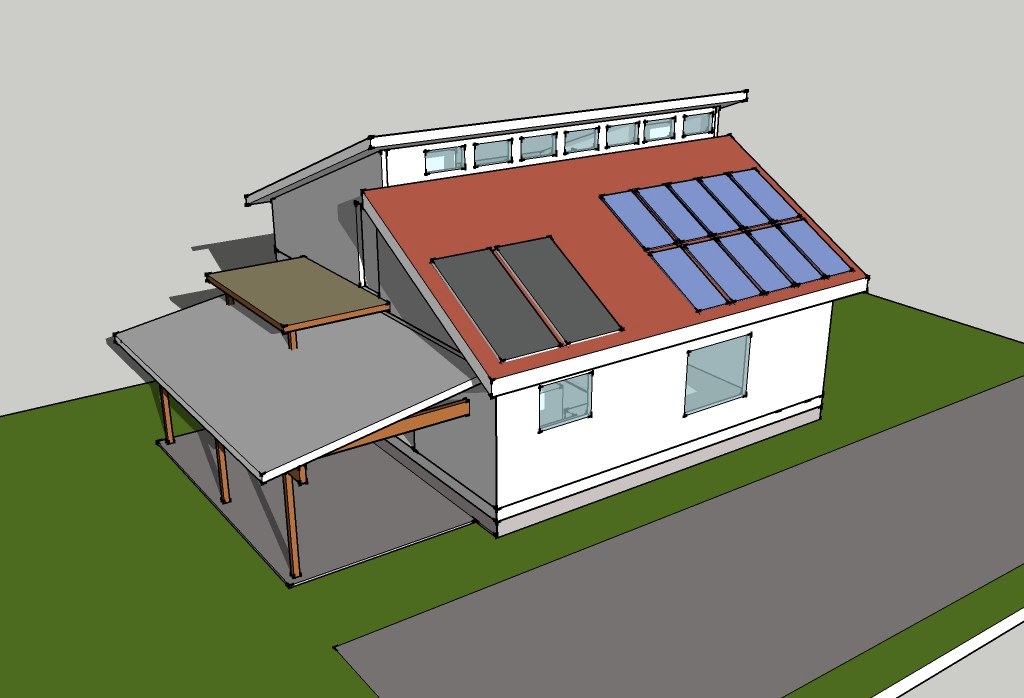
December 21st at Noon. The south facing windows are completely exposed to the sun, allowing for solar heat gain in the winter.
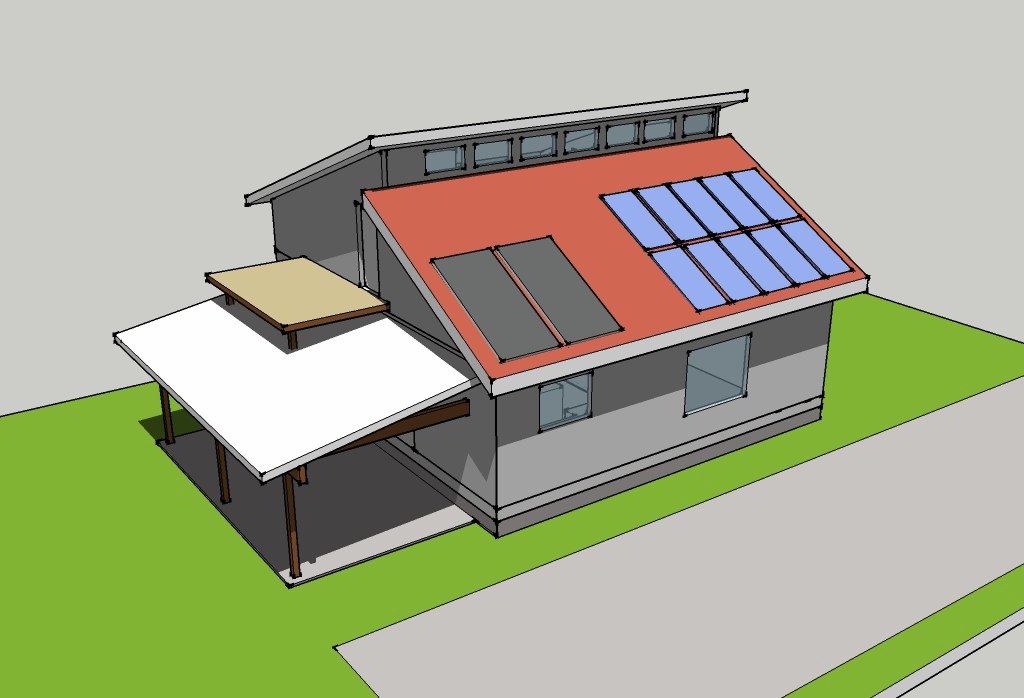
June 21st at Noon. The south facing windows are mostly shaded from the sun, reducing solar heat gain in the summer. When we redo the siding and windows, the big one on the right will be replaced by a few that sit higher up, out of the sun.
With the southern exposure properly shaded in the summer, we'll have to be careful to pick out windows that allow the sun to create heat in the home in the winter. If we pick the most highly coated windows on the market, we will be working against ourselves. They must allow the solar rays in, but keep the infrared energy from leaving. This is done by using the proper Low-E glass. The NFRC rating label describes each window's property and helps in picking the right ones.

The winter sun is heating the home, while the Low-E glass is reflecting interior energy off the inside pane, keeping the heat in.
The next point to tackle is insulation. If I were building a brand new home, I'd start with at least an 8" wall, but we have to work with what we have, which is a 4" wall with R-13 insulation. They look something like this:

The problem is, the R-13 insulation value is only in between the studs. The 2x4" stud only has an R-Value of about 4. Using a formula to factor in the wall framing, or cheating and using this calculator, I can see that I really only have an effective R-Value of about 10, maybe less depending on how well it was all installed.
Using a thermal camera, you can see how much heat transfer goes through the wood framing
In essence, this is what the 3D image of my walls should really look like:
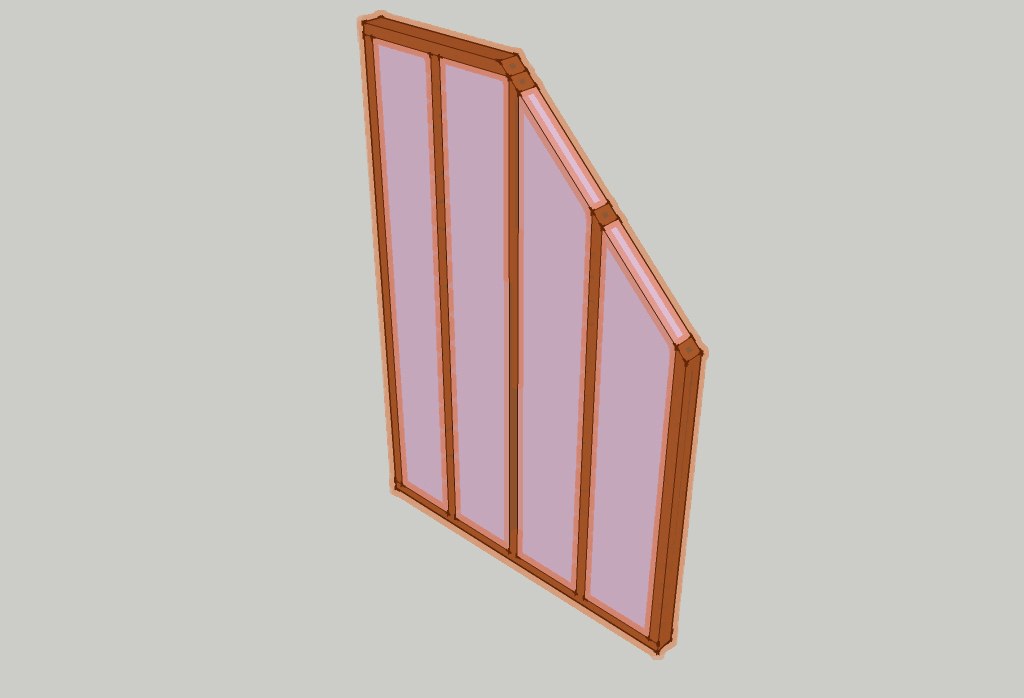
Heat is lost rapidly due to thermal bridging through wood, or other materials that are good conductors.
Our plan is to tear off the siding and install horizontal 2x2" battens.
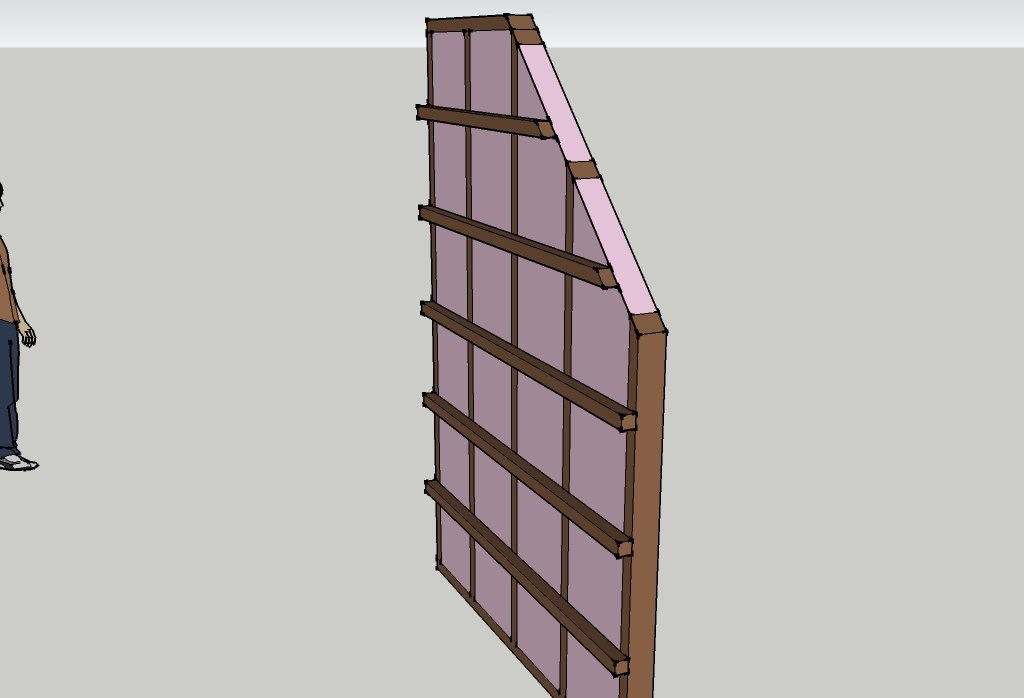
Now the walls are 6" deep and are ready to be further insulated.
Through this method, thermal bridging is drastically eliminated.
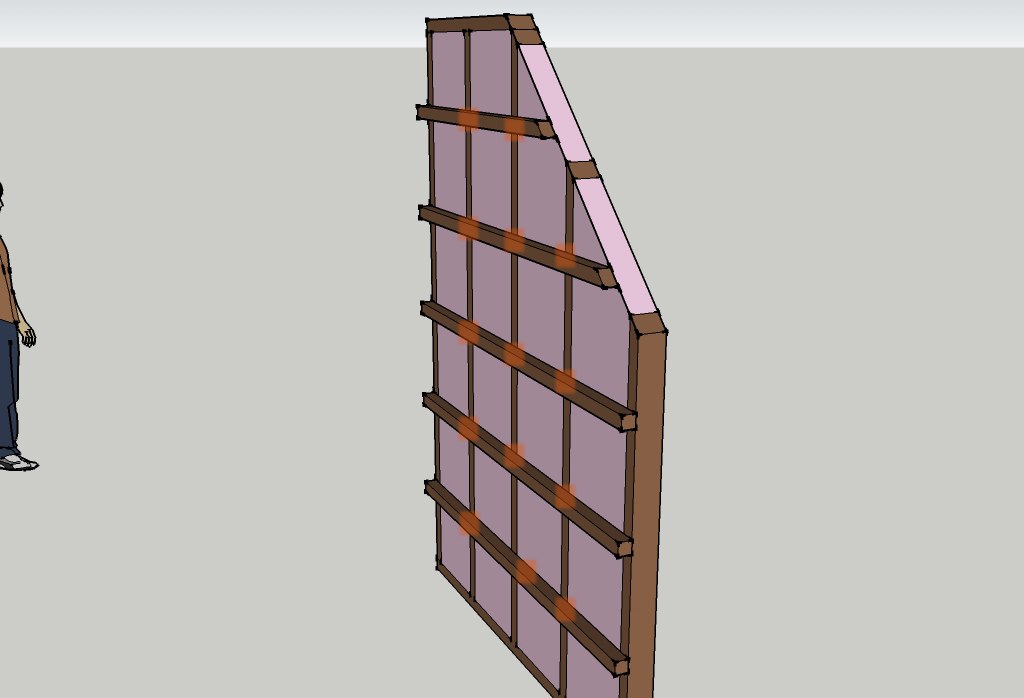
The only thermal bridge points now are where a the battens cross the studs.
The final step is to install rigid foam insulation in between the battens. This would give us another R-10, bringing the walls up to R-23 with an effective R-value much closer to 23 than it was to 13.
Ceilings are the key spot for insulation and ours are going to be difficult. They are vaulted throughout most of the house and the rafters are anywhere from 6" - 10" deep. Since we are trying to avoid demolishing the interior walls, we're going to have to tear off the roofing material along with the plywood to open up to the framing. At this point, all of the framing will be brought up to 10", maybe even 12" deep and insulated using spray foam. Spray foam has some pros and cons, but I feel it's a great choice for our situation.
Spray foam cons
Spray foam pros

Spray foam fills the entire framing cavities, leaving no room for condensation inside the assembly
Overall, it's widely agreed upon between sustainable building professionals that the environmental impact of petroleum insulation products will be greatly offset by the energy they save in their lifetime. My job is to research and pick one with the smallest impact so that the offset can be achieved in a fairly short time.
The floor will need to be re-insulated as well, but I haven't spent enough time under the house looking at it to determine what it needs yet.
As we get closer to doing the exterior wall changes, we will plan on doing the windows at the same time. At this point, we will take a look at typical wind direction in the summer and engineer a way to take advantage of cross breezes through the house to help cool it on those few hot days we get each year.
Once these passive design features are in place, we will have eliminated the need for air conditioning all together and significantly reduced our heating demand.
The next post will be about energy efficiency through active systems.




Thank you for sharing the information.
ReplyDeleteThis house is constructed really very well and the concept of green building is helping to construct the building more efficiently by using various types of natural resources like wood, water, plants etc.
There are number of companies who are providing the service of green building and there is a company named as logical green institute who is providing the service of green building educational video as well as green project marketing in FL.